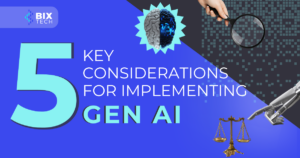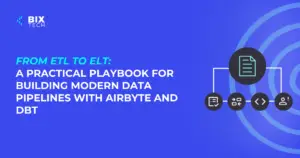Database Sharding Explained: Strategies, Examples, Tools, and Real-World Insights

Sales Development Representative and excited about connecting people
As businesses scale and data volumes explode, database performance can quickly become a bottleneck. If you’ve ever watched your application slow to a crawl, or worse, crash, during peak traffic, you know the pain all too well. That’s when learning about database sharding can be a true game-changer.
In this post, we’ll break down what database sharding is, how it works, how it differs from partitioning and replication, and the practical strategies and tools you can use to implement it. Along the way, we’ll share real-world lessons, benefits, and key tips that can help you scale your systems with confidence.
What Is Database Sharding?
At its core, database sharding is the process of splitting a large database into smaller, more manageable chunks called shards. Each shard operates as an independent database, storing only a subset of the overall data.
Think of it like dividing a massive spreadsheet into several smaller tabs—each tab handles part of the overall workload. Instead of every query searching the entire database, queries interact with only the relevant shard, boosting efficiency and performance.
Why Shard a Database?
Sharding isn’t a silver bullet for every challenge, but it shines when:
- Your data size or traffic grows beyond what a single database server can handle.
- Query latency and resource contention start to impact user experience.
- You want to scale horizontally, adding more database servers as needed.
- You need to maintain uptime and resilience, even during outages or surges.
Before jumping into sharding, it’s worth considering simpler alternatives like vertical scaling (adding more compute resources to a single server) or replication. But as your organization grows, these solutions can hit limits, cost-wise and technically, making sharding the natural next step.
Sharding vs Partitioning vs Replication: What's the Difference?
It’s easy to confuse sharding with partitioning or replication. Let’s clarify:
Sharding vs Partitioning
- Partitioning divides data within a single database instance into logical segments (partitions), often based on criteria like range, list, or hash. For example, all January transactions are in one partition, February in another. Partitioning can boost query speed by narrowing the search scope.
- Sharding takes partitioning further by distributing these segments across multiple, independent databases (shards). Each shard can live on its own server, dramatically increasing scalability and resiliency.
In practice, partitioning is often a stepping stone. Once your data or workload outgrows what a single database can manage even with partitioning sharding becomes essential.
Want to explore more about how data architecture evolves? Check out this in-depth guide on building solid data architecture for modern businesses.
Sharding vs Replication
- Replication creates multiple copies (replicas) of the same database, often across different servers. This boosts availability and enables load balancing for read-heavy applications. If one replica fails, others can take over great for disaster recovery.
- Sharding, in contrast, splits data across databases, each holding only a portion of the total. This tackles scalability head-on, distributing both read and write loads.
Many large-scale systems combine both: each shard might have replicas for redundancy and high availability.
How Does Sharding Work? Key Components and Strategies
Implementing sharding requires careful planning. Let’s break down the fundamentals:
1. Partitioning Logic
Decide how to split your data. Common approaches include:
- Range-based sharding: Assigns data to shards based on a range of values (e.g., user IDs 1-1000 in Shard A, 1001-2000 in Shard B). Simple but can lead to “hot spots” if data isn’t evenly distributed.
- Hash-based sharding: Uses a hash function to assign data to shards, ensuring a more even distribution but making rebalancing trickier if you add or remove shards.
- Geographic sharding: Distributes data based on user location (e.g., all European users in one shard, North American users in another). Useful for global applications, reducing latency.
Choose your partitioning logic based on your data patterns and business needs. For instance, range-based sharding works well for time-series data, while hash-based is better for unpredictable workloads.
2. Routing Layer
A routing mechanism (often built into your application or a middleware layer) directs queries to the correct shard. This can be as simple as client-side logic or as sophisticated as a dedicated sharding proxy.
3. Rebalancing and Resilience
As data grows, you may need to rebalance shards—splitting or merging them to keep loads even. Monitoring, alerting, and automation are crucial for keeping your sharded architecture healthy.
Benefits of Database Sharding
Let’s look at why sharding is such a powerful strategy for fast-growing businesses and applications:
1. Scalability
Sharding enables horizontal scaling: you can add more database servers (shards) as your data and traffic increase. This flexibility is essential for modern applications, from SaaS platforms to global e-commerce sites.
2. Performance
By working on smaller datasets, queries execute faster and resource contention drops. This leads to lower latency, snappier user experience, and smoother peak-time performance.
3. Fault Tolerance & High Availability
If one shard fails, only a portion of your application is affected—the rest remains online. Combined with replication, sharding forms the backbone of resilient, always-available systems.
4. Cost Efficiency
You don’t need to invest in ever-larger, high-end servers. Instead, you can use commodity hardware, scaling out as needed, which is often far more cost-effective.
5. Geographic Distribution
Geographic sharding allows you to store data closer to your users, reducing latency and complying with data residency regulations in different regions.
> For even more on scaling strategies, see our practical guide to building scalable software applications and how sharding fits into the mix.
Real-World Sharding Examples
- Social Media Platforms: User data is often sharded by user ID to distribute the load and minimize contention.
- E-commerce Sites: Orders or transactions may be sharded by region or order number to handle high volumes during sales events.
- Gaming Backends: Player data can be sharded geographically, ensuring low-latency gaming experiences around the globe.
Popular Sharding Tools and Technologies
Many modern databases provide built-in support for sharding:
- MongoDB: Native sharding with automatic balancing and failover.
- Cassandra: Wide-column store that uses consistent hashing for sharding across nodes.
- MySQL Cluster: Partitioning and sharding capabilities for high-traffic workloads.
- PostgreSQL: Extensions like Citus add distributed sharding to Postgres.
Choosing the right tool depends on your tech stack, data model, and scaling goals.
When Should You Implement Sharding?
Timing is everything. Implement sharding too early, and you add unnecessary complexity. Wait too long, and migration can become a major headache. Here’s how to decide:
- Monitor database metrics: Watch for slow queries, increasing latency, or downtime during traffic spikes.
- Project growth: If your data or traffic is on a steep upward curve, plan ahead for sharding.
- Evaluate alternatives: Sometimes, partitioning or replication is enough—at least for now.
The key is to be proactive, not reactive. Start with partitioning, optimize queries, and only move to sharding when the evidence is clear and compelling.
Key Takeaways & Next Steps
Database sharding is a cornerstone of modern, scalable architectures. When implemented thoughtfully, it empowers businesses to deliver fast, reliable digital experiences even as data volumes and user bases soar. But like any powerful tool, it comes with complexity—so plan carefully, choose the right strategies, and monitor your systems closely.
Looking for more ways to future-proof your data infrastructure? Explore how data engineering is shaping modern business and why robust, scalable databases are at the heart of digital innovation.
Ready to scale with confidence? Keep learning, keep monitoring, and consider sharding as your secret weapon for performance, resilience, and growth. If you have questions or want to share your sharding stories, drop a comment below!









